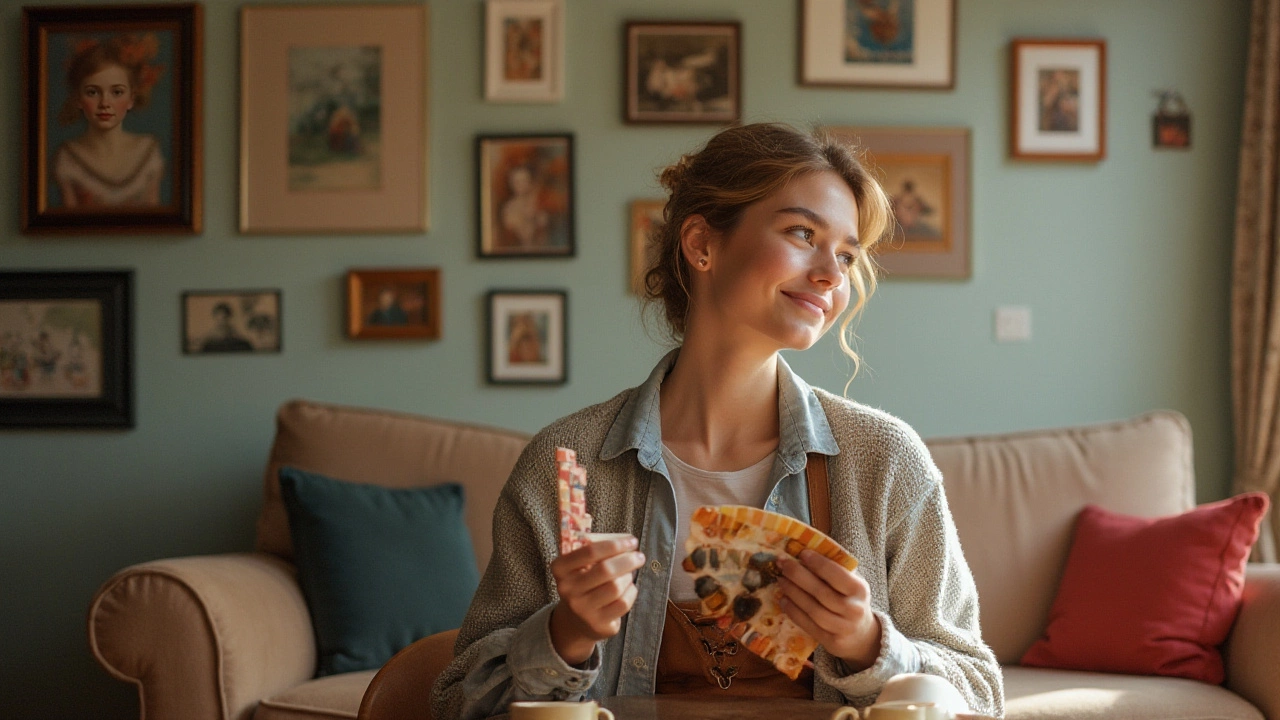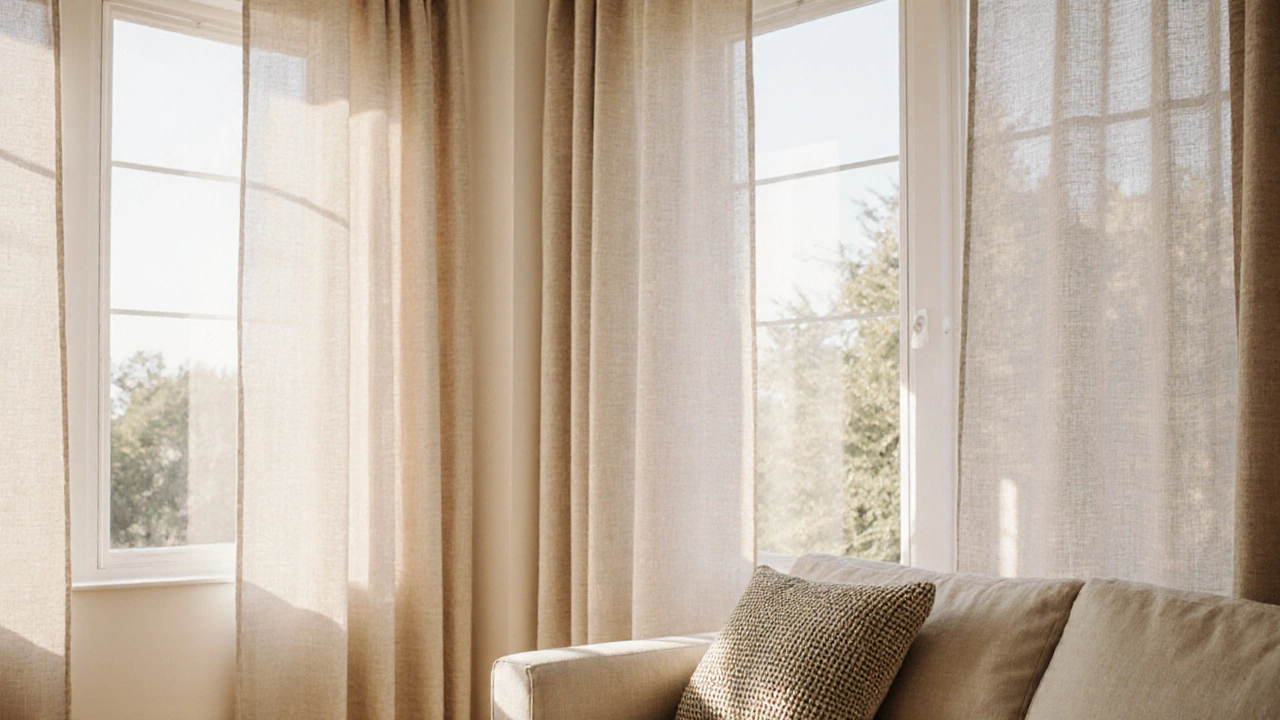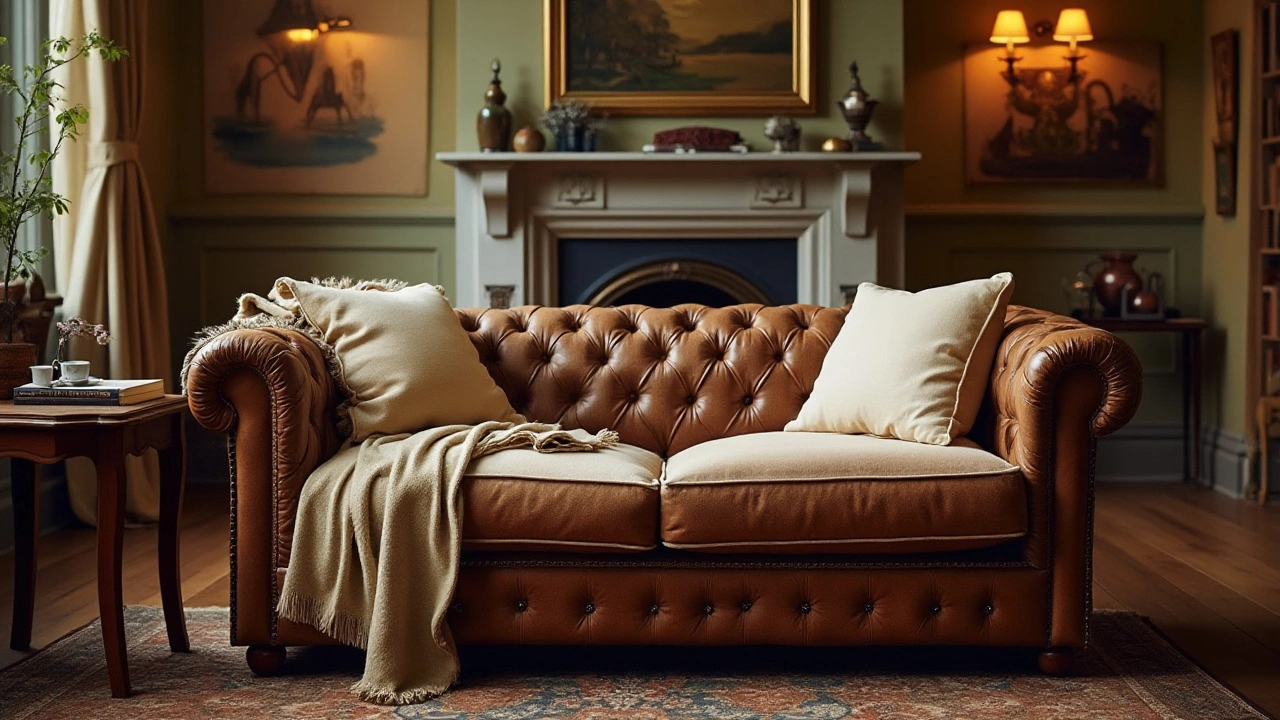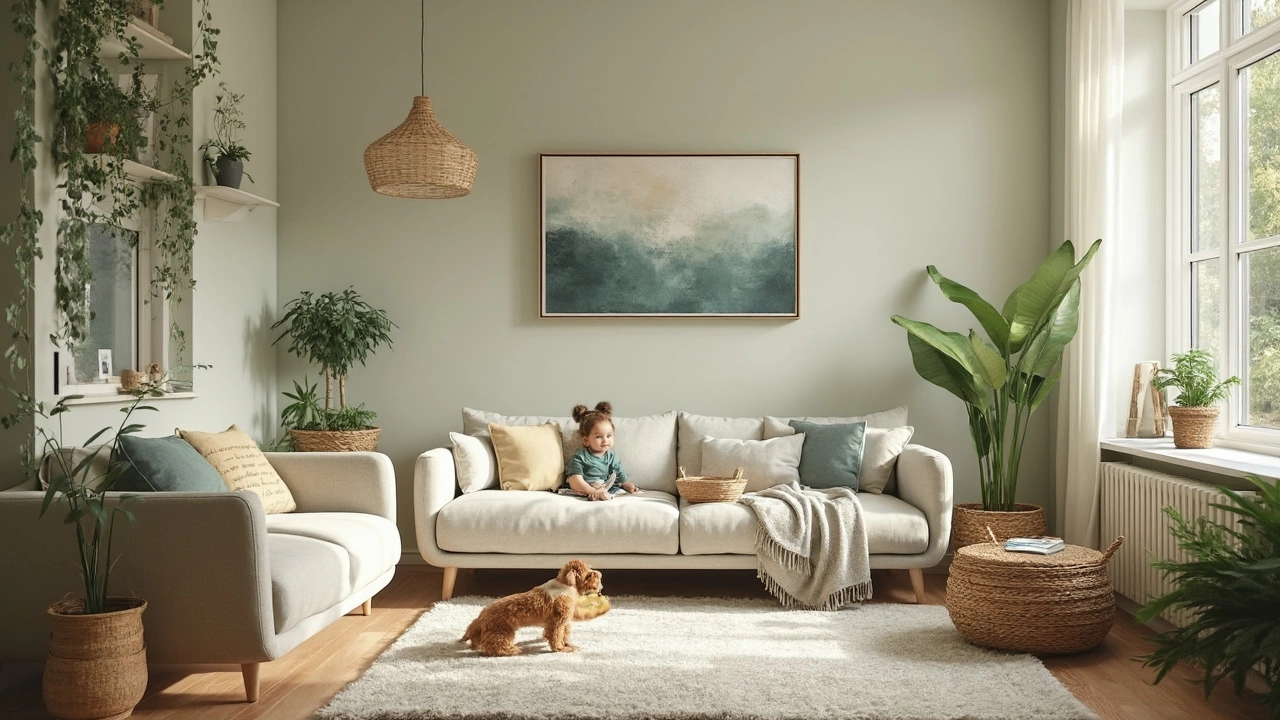Creating wall art is an adventure into the world of self-expression and home decoration. It's not just about covering up a blank wall, but rather about crafting a narrative that reflects your personality and taste. Whether you're starting from scratch or adding to an existing collection, there's always something new to learn and explore.
The beauty of wall art lies in its diversity. You can start with an elaborate gallery wall filled with family portraits or embark on a DIY project that's entirely unique. It's all about what resonates with you and fits your home the best. In this guide, we will walk you through the essentials of setting up your first piece of wall art, offering tips and ideas that make the process enjoyable and creative.
- Understanding Your Space
- Choosing Your Style
- Gathering Materials
- Basic Techniques to Try
- Personalizing Your Art
Understanding Your Space
Before diving headfirst into the creation process, it is crucial to spend some time evaluating the space where you envision your wall art. Recognizing and understanding your space is the first step in ensuring that what you create complements and enhances the environment rather than overwhelming it. Whether you have a cozy nook or a towering entryway, taking measurements and examining light sources can significantly impact the outcome. Light plays a pivotal role; the way it hits a wall at different times of day can change the perception of colors and textures. Not to mention, spaces that receive abundant natural light might allow for a different choice of mediums that play with light and shadows, such as glass or mirrored pieces.
Space evaluation also involves observing the current decor style of your room. Is it minimalist with clean lines and subtle colors, or does it feature a more eclectic mix with bold hues and diverse textures? Understanding the prevailing style will guide your art choices, ensuring harmony and coherence. An interesting fact about space considerations is the "Goldilocks principle" in interior design, which suggests that your art should not be too large or too small for the wall, much like ensuring a bowl of porridge is 'just right'. Experts often recommend that your artwork should fill about two-thirds to three-fourths of the wall space, giving a balanced look that's neither overwhelming nor undersized.
If you encounter a challenging space, such as one interrupted by doors or windows, creating a consistent visual thread with the placement of multiple smaller pieces might work better than one large piece. This concept borrows from the idea of the 'gallery wall', a collection of artworks that together tell a story. Each piece can be distinct yet connected through a common theme or color palette, effectively utilizing the wall space without overcrowding it.
"A room should never allow the eye to settle in one place," said Juan Montoya, a celebrated interior designer. "It should smile at you and create fantasy." This quote encapsulates the essence of creating movement and intrigue within a space through art.
To get started, you might draw a scaled outline of your wall on paper and experiment with different configurations of art arrangements to see what feels best. This simple visualization can prevent hasty decisions that you might later regret. Additionally, consider how your chosen pieces can reflect your personality within the confines of the room. Are you trying to create a calming oasis with cool blues and greens, or perhaps you prefer to convey energy and vibrancy? Each room in your home may call for something different, so appreciate the unique qualities of each space. Remember, if your style is very fluid and you anticipate frequently changing your wall art, using adjustable wall brackets and ledges can offer you versatility without the need for constant re-drilling.
Choosing Your Style
When it comes to designing wall art, the first step in the creative journey is deciding on a style that resonates with you. This choice not only reflects your personal taste but also sets the tone for the rest of the space you're decorating. Think about what inspires you: are you drawn to clean lines and a modern look, or do you crave the warmth and charm of vintage flair? Maybe, the eclectic mix of bohemian designs speaks to your adventurous side. Start by immersing yourself in visual inspiration—browse through magazines, online platforms, and even visit local art galleries to see what catches your eye.
One essential aspect to consider when choosing a wall art style is color. The right colors can transform a space, evoke emotions, and even influence your mood. A vibrant and colorful design might energize a room, while softer, muted tones could offer a more calming atmosphere. Consider the existing color palette of your room and how your artwork will either complement or contrast with it. Don't be afraid to experiment with bold choices if they align with your vision.
Another factor is the theme or subject matter of your DIY wall art. This could be anything from abstract forms and geometric patterns to landscapes and portraiture. It's about what speaks to you personally and what you want to see every day. Your theme can tell a story or create a focal point in the room, drawing people in and inviting conversation. Creating a vision board where you gather images, colors, and ideas can be a helpful tool in this process.
Don't forget to consider the scale and placement of your artwork. Large pieces usually offer a bold statement and can act as the focal point of a room, whereas smaller, more detailed works are perfect for filling in gaps and adding layers to your decor. As you plan the placement, keep in mind eye level and viewing distance to ensure that the artwork is both accessible and showcased to its best advantage.
"Art is not what you see, but what you make others see." – Edgar Degas
For those who want to go the extra mile, mixing different styles and mediums can yield a unique and personal result. Imagine a gallery wall that combines framed photographs, painted canvases, and even three-dimensional elements like wooden letters or metal sculptures. This eclectic mix not only captures attention but also encourages creativity in every step of your decorating process. Remember, there are no hard rules here—just guidelines to help you find what makes you happy.
Finally, infuse your art projects with personal elements. This could be aspects that remind you of your travels, hobbies you love, or moments you cherish. Tailoring these details within your artwork ensures that every time you look at it, you're reminded of the happy memories and the stories behind them. Crafting an art piece that's not only stylish but also personally meaningful adds layers of authenticity and joy to your home.
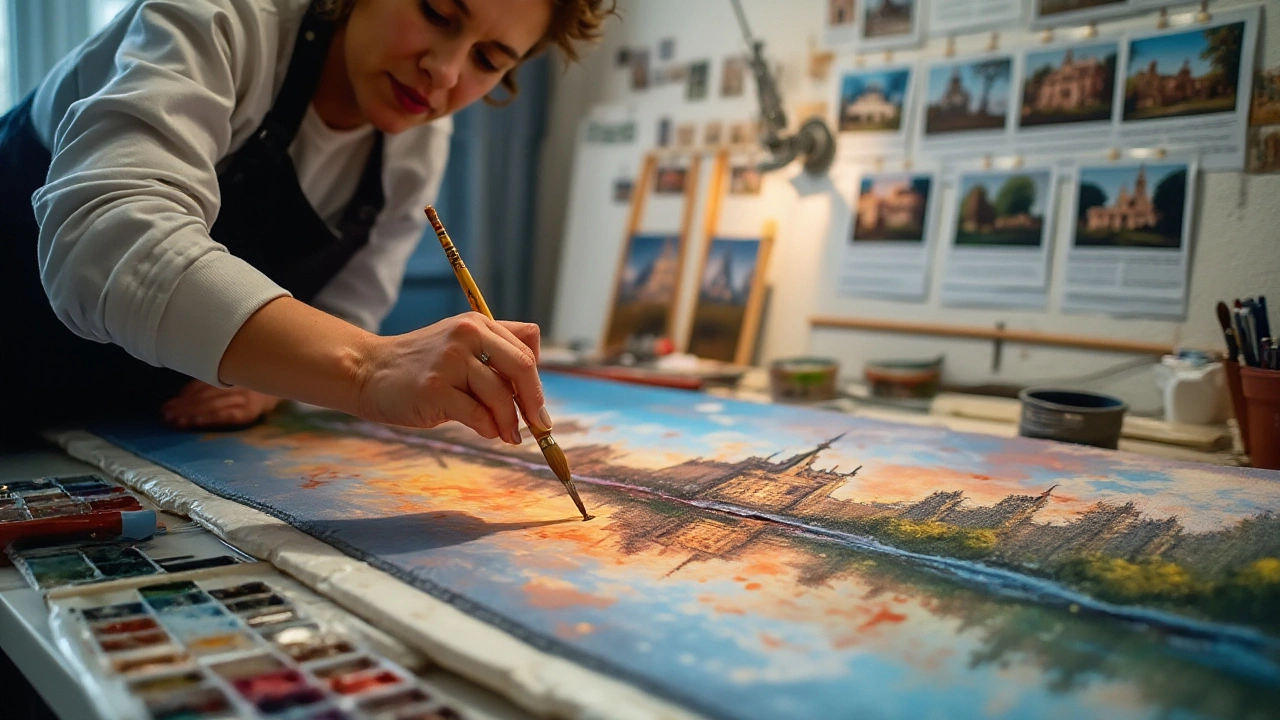
Gathering Materials
Dipping your toes into the world of DIY wall art requires a thoughtful approach to sourcing materials. This initial step is both vital and invigorating, as it sets the foundation for your entire project. You'll want to start by reflecting on the theme or style you aim to capture, as this will guide your choices in art projects. A trip to a local art supply store can be inspiring in itself, but it’s equally crucial to arrive prepared, knowing the specific items you'll need.
For beginners, a basic list might include high-quality brushes, a selection of paints in colors that complement the room’s palette, and a sturdy canvas if you're planning on painting. Don't forget the little things that make a big difference like painter’s tape, palettes, and canvases. For those venturing beyond painting, items such as colored papers, fabric scraps, or even small decorative elements like beads and buttons can transform the dimensions of your piece.
“Art enables us to find ourselves and lose ourselves at the same time.” – Thomas Merton
Consider environmental and budgetary constraints as well. Sustainable options could include recycled materials or thrifted art supplies. Another key point is to be innovative with everyday items around the house—old magazines can become collages, while unused fabric may add texture and depth to your creation. This not only reduces waste significantly but also adds a personal and unique touch to your work.
A practical tip is to categorize your materials once you have acquired them. Organizing them based on their nature—such as paints, brushes, and enhancements—can save you a lot of trouble later on, especially if you decide to work on multiple home decor projects simultaneously. Utilize small containers or labeled jars as they can tidy up your workspace effectively. If it’s your first time, start accumulating your tools over time to prevent overwhelming expenses in a single go.
On the technical side, it’s beneficial to become acquainted with the longevity and maintenance of various materials. For instance, acrylics are a go-to for many artists due to their quick drying time and vibrancy. However, understanding how to properly maintain your brushes and what type of cleaning solutions work best for different paints can extend the lifetime of your supplies. Consider this as an investment in your newfound passion for wall art.
In today's digital age, online retailers offer vast selections, often at competitive prices, allowing for price comparisons and the convenience of home delivery. However, visiting local shops and markets can offer tactile experiences, which enable you to see and feel the materials firsthand. It's sometimes those spontaneous finds that could spark unexpected creativity. Therefore, striking a balance between both avenues might just be the sweet spot in your material gathering journey.
- High-quality brushes
- Various paints and colors
- Sturdy canvases
- Painter’s tape and palettes
- Decorative elements like buttons or beads
- Recycled materials for eco-friendly projects
- Organization supplies like containers or jars
Basic Techniques to Try
Stepping into the world of wall art, especially if you're new, can feel daunting. But fear not, there are simple techniques that can transform you from a casual enthusiast into an adept creator. The beauty of wall art lies in its flexibility, where basic methods can yield stunning results with a personal twist. Let's start with the classic approach: the collage. You may remember collages from arts and crafts as a child, and with good reason. They allow you to merge different pieces, materials, and memories into a breathtaking narrative. Begin by collecting assorted items like magazine clippings, photographs, or fabric scraps. Arrange them in various ways on a large piece of poster board until something clicks. This can provide a constantly evolving piece of home decor that's as unique as your fingerprint.
Next up is the paint technique, which is perfect for those looking to splash some color into their lives. Start by selecting a color scheme that complements your room's overall mood. For a serene atmosphere, go with soft pastels or cool tones. For something vibrant, opt for bold, bright hues. Acrylic paints are user-friendly, drying quickly and offering bright, long-lasting colors. Experiment with brush strokes; try dabs, streaks, or even splatters to create texture and movement. Remember, art is not about perfection, but expression. As Picasso once said,
"Every child is an artist. The problem is how to remain an artist once we grow up."Let your inner child play! If you wish, add additional layers or even insert textures using materials like bubble wrap or a sponge for a truly unique finish.
Another fantastic technique is stenciling, which combines the precision of a template with the creativity of color and design. With stencils, you get to create intricate patterns without needing advanced artistic skills. All you need is a stencil of your choice, paint, and some patience. Secure the stencil with tape on the chosen area of your wall or canvas, and fill in the design with a paint roller or sponge. This technique allows for repeating patterns, which can create a consistent, lovely theme across a room. It’s a great way to tie together different design elements within a space. For a personal touch, try designing your stencil or customizing existing ones to better fit your artistic vision.
Lastly, consider the mixed media technique, which is particularly delightful for those who enjoy layering different artistic elements. Mixed media can involve anything from paint and paper to fabric and found objects, giving you the freedom to experiment. It allows you to incorporate all those little things that matter to you into a cohesive art piece. Start with a good base, like canvas or thick paper, and build up from there. You could paint a simple background, then layer on pages from books, ticket stubs, or even tiny trinkets that have sentimental value. This approach encourages the use of texture and dimension, resulting in an artwork that is intriguing and inviting to the viewer's touch and gaze alike.
These basic techniques open doors to endless possibilities, each allowing you to bring your artistic ideas to life in vivid, exciting ways. Experiment with each as a stepping stone and remember that DIY wall art doesn’t require adherence to strict rules—instead, it’s all about enjoying the process of creation and letting your living space become a canvas that tells your story.
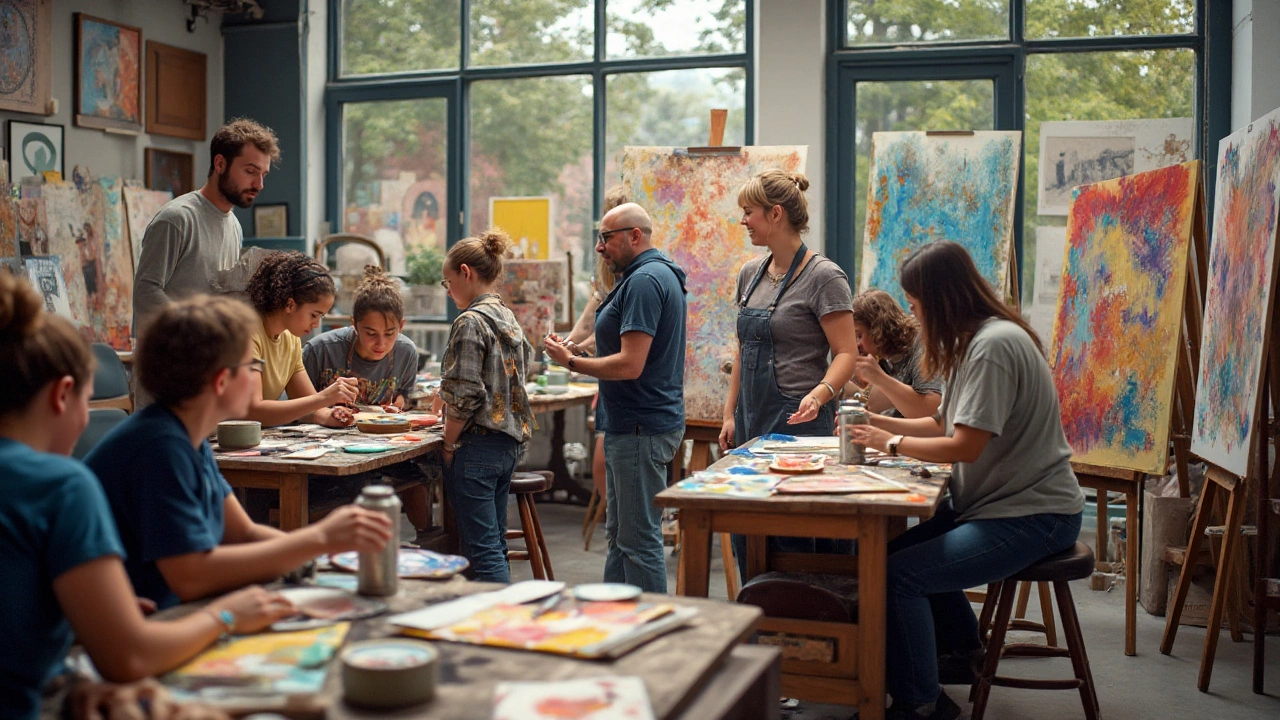
Personalizing Your Art
When it comes to wall art, personal touches can elevate your project from mere decoration to a meaningful artistic statement. This is your opportunity to infuse personality and creativity into your living space, making it truly yours. Whether through color, form, or function, personalization can transform your art into an outward expression of your innermost thoughts and styles. Start by considering elements that hold sentimental value or memories, such as photographs, travel souvenirs, or inherited art pieces. These elements can become focal points in your wall art display and evoke feelings of nostalgia and comfort.
A popular and engaging way to personalize is through incorporating a unique DIY wall art project. This can be as simple as painting a canvas with your choice of colors and patterns or as complex as crafting a 3D installation piece. The key is to choose projects that reflect your personal likes and the aesthetics you wish to bring to the room. Fabric wall hangings, for instance, can add texture and warmth, while a hand-painted mural might bring an element of fun and liveliness.
When choosing colors, think about the mood and vibe you want for the room. Bright and vibrant hues can bring energy and vibrance, while soft pastels or neutral tones often create a serene atmosphere. According to a study by the University of Texas, color can affect moods and perceptions, with blues and greens having a calming effect, while reds and yellows can increase energy levels. Use this knowledge to create an environment that aligns with how you want to feel in the space.
Another effective way to personalize your wall art is by using mixed media techniques, which involve combining different artistic methods and materials. For instance, you might layer photographs with paint and fabric to create a dynamic and tactile composition. Not only does this add depth and interest, but it also allows you to experiment with different textures and finishes. Consider using items such as lace, paper, wood, or metal to give your piece a multidimensional aspect.
"Art is the most intense mode of individualism that the world has known." - Oscar Wilde
This quote from Wilde reminds us that art is an intensely personal act, and there's no right or wrong in the way you express yourself through it. Remember, the ultimate goal of personalizing your wall art is to reflect a piece of yourself while also providing an aesthetic boost to your home decor. By deliberately choosing and arranging elements that speak to you, you ensure that each piece resonates with your unique story and character.
Don't shy away from experimenting with unexpected materials or approaches. Personalizing is all about breaking the mold and finding what resonates with you. Sketch out a plan if needed, experiment on a small scale, and be ready to adapt as you go. The journey of creating wall art is just as important as the final result, so enjoy the process and let your imagination fly as you bring your genuine artistic vision to life.

